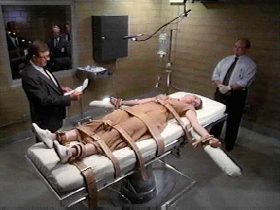 We have all seen soldiers marching in a group and in a disciplined manner on occasion. This type of military grouping is known by the term closed order. This way of moving is as old as the armies themselves and has a meaning that goes beyond mere appearances.
We have all seen soldiers marching in a group and in a disciplined manner on occasion. This type of military grouping is known by the term closed order. This way of moving is as old as the armies themselves and has a meaning that goes beyond mere appearances.
The functions of the closed order
First, it allows the person in charge of a military formation to give orders to the entire group of soldiers. In military terminology, the concept of command voice is fundamental for the organization of any action and the command voice of the person in charge of a group of soldiers is what allows the different movements and changes of step.
This type of training is simple and allows soldiers to move quickly. This is especially relevant in combat situations.
The fact that the soldiers are united in an orderly manner enhances the idea of discipline and obedience.
It is related to group spirit. A dispersed and disorganized troop will hardly feel cohesive.
One aspect that should not be forgotten is the question of the martial image. In this sense, it has to include a whole series of aesthetic formalities that complement its strictly military sense.
In short, this type of military grouping has a strategic dimension, as well as a psychological and aesthetic component.
It supposes to be much more than a simple grouping of soldiers
 There is no single closed order modality, as it can be in formation, in a row, in a column or online. At the same time, the number of soldiers is equally variable (for example, in a column of one, two, four, etc). On the other hand, movements can be carried out with or without weapons, with changes of direction or without changes. In any case, both individual and collective movements are perfectly defined.
There is no single closed order modality, as it can be in formation, in a row, in a column or online. At the same time, the number of soldiers is equally variable (for example, in a column of one, two, four, etc). On the other hand, movements can be carried out with or without weapons, with changes of direction or without changes. In any case, both individual and collective movements are perfectly defined.
The execution of the movements has a more complex theoretical foundation than it might seem at first glance. Thus, movements must be synchronized and for this the motor skills of the human body must be taken into account.
It is directly related to body rhythms, especially heart rate and breathing. At the same time, a number of factors must be taken into account, such as balance, body posture and relaxation.
Photos: Fotolia - branex / kichigin19









